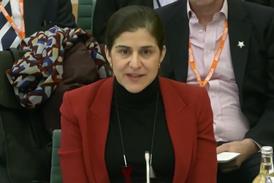On the face of it, 2016 was not a great year in which to embark on an IT-based transformation programme in the public sector. The government and its preferred IT contractors were still reeling from apparent fiascos in computerising everything from the NHS to the Passport Office. In a seemingly endless sequence of parliamentary inquests into failed IT projects, the justice system was regularly in the dock. At one stage, the House of Commons Public Accounts Committee described the Libra Magistrates Courts project as the worst it had ever encountered.
The jinx on big IT projects was not confined to the UK public sector. Research revealed that, worldwide, only 28% of large-scale IT projects, whether in the public or private sector, came in on time, on specification and on budget.
So, in the words of Yes Minister’s Sir Humphrey, the announcement of a seven-year billion-pound Courts and Tribunals Reform Programme was ‘courageous’. It aimed to introduce new technology and working practices to modernise the justice system through five workstreams: criminal courts, civil and family courts and tribunals, the courts estate, video hearing technology and centralised back-offices. Savings would be made from administrative costs, hearing fewer cases physically and – especially – running a smaller estate.
It was little surprise, then, that courts reform seemed to be following in the footsteps of previous disasters. Just over two years ago, the National Audit Office reported that, despite a 10% increase in the programme’s budget and a two-year extension: ‘HMCTS does not expect to be able to deliver the programme to its current timetable and full scope.’ A notorious element was the Common Platform digital case management system. ‘The design… proved more complex than first anticipated, leading to early project delays and financial losses.’
Yet, announcing the project’s formal closure at the end of last month, HMCTS chief executive Nick Goodwin was in an upbeat mood, claiming the programme ‘has delivered fundamental changes to how we serve the public and legal professionals alike’.
He wrote in the Gazette: ‘The numbers tell a compelling story: over 4.1 million cases submitted digitally, user satisfaction rates of 93% for online probate and 85% for social security appeals, and well over half a million members of the public using our digital civil money claims service.’
While the scope of the original ambitions ‘proved too broad’, and the programme took longer than planned, ‘we’ve learned from these experiences’, Goodwin maintained.
The Law Society, meanwhile, marked the occasion by affirming its support for ‘positive change’ – but not at the expense of justice. President Richard Atkinson observed that the programme ‘has not been without its challenges’. Law Society research (and comments by Gazette readers) suggest continuing frustration with aspects of the transformed processes, with more than half of solicitors surveyed by the Society saying the main impact of online portals has been wider delays.
‘There is still much more to be done and we will continue to work with HMCTS to ensure our courts and tribunals are fit for purpose for a 21st-century justice system,’ Atkinson said.
Some specifics of what needs to be done emerged in the master of the rolls’s evidence last month to the House of Commons Justice Committee’s inquiry into the work of the county court. ‘I am very disappointed that we are going to reach the end of reform with only 23% of cases beginning and ending with digital, and the rest ending up on paper,’ Sir Geoffrey Vos told the MPs. ‘It is a terrible twilight situation and we must do better in the next four years.’
A particular problem is overlapping legacy systems, which cannot communicate with each other – the ‘very, very old-fashioned’ CaseMan system, for example. This is a far cry from the dream at the programme’s outset of shared case data across the civil courts. Vos also revealed that the CE-file electronic filing system, the pride of the High Court, is ‘not fit for the future’ and will have to be replaced in ‘three to four years’. The Money Claims Online system likewise is ‘hopelessly outdated’.
Despite this, a digital justice system is ‘within reach’, the master of the rolls said, urging an extension of the programme. ‘It doesn’t matter what you call it,’ he said. ‘It is important that work in scope is completed, we’re not talking vast amounts: millions, not hundreds of millions.’
We must wait until the June spending review to see if the chancellor of the exchequer is impressed.































5 Readers' comments